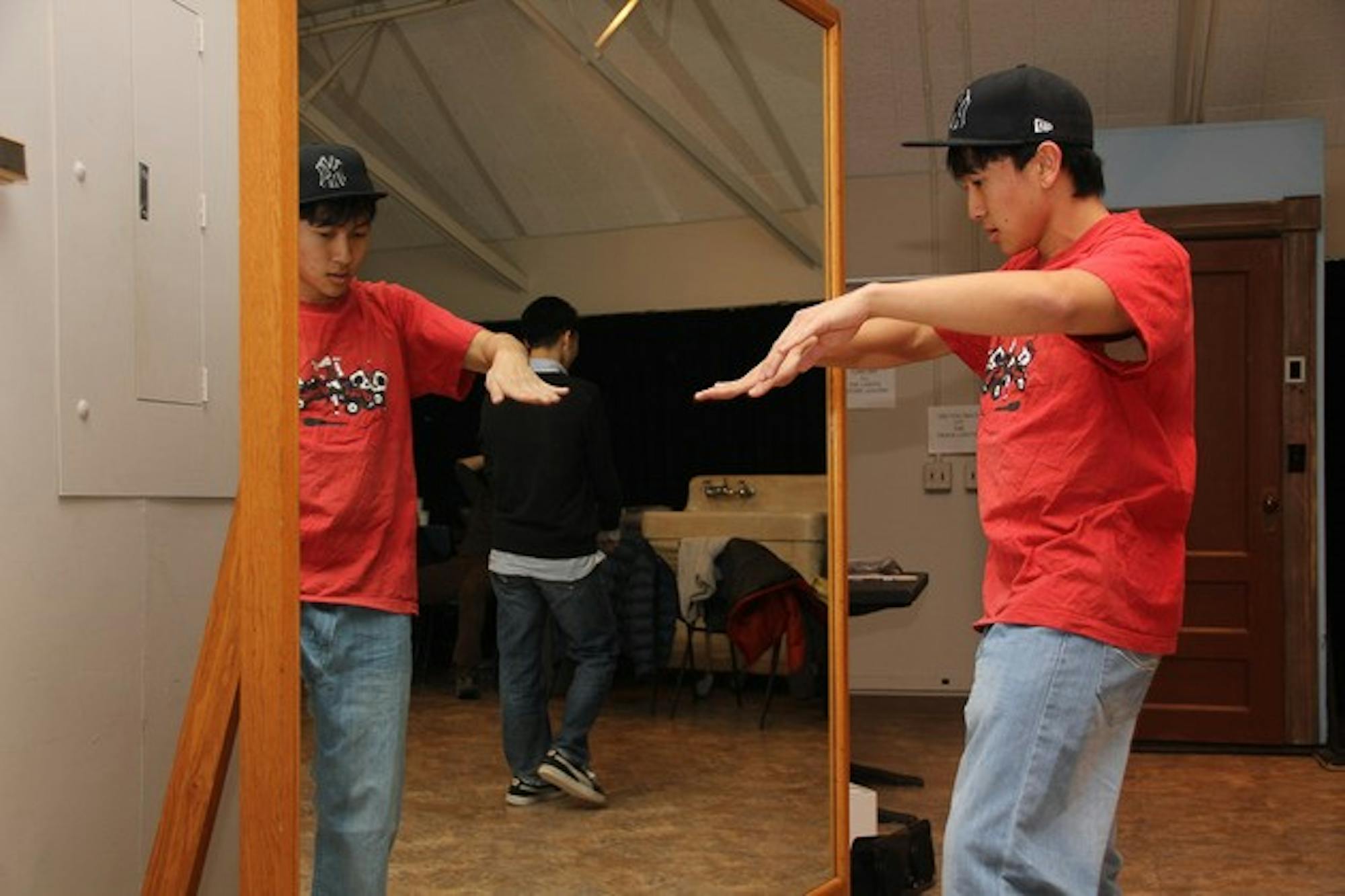And with that pithy explanation, he proceeded to demonstrate one of the fundamental moves of the dance style known as popping.
He raised his arm in an almost robotic fashion and began to alternately contract and relax his muscles, producing a quick jerk in his arm.
Moving to the beat of the music, he continued to dance freestyle until the song finished. A mesmerized audience of students applauded.
Tan has come a long way from his novice days on the streets of his native Singapore. In an interview with The Dartmouth, he explained that he first became interested in popping after he watched an online video demonstrating the style in 2005.
He found a mentor in Ben Koh (street name pSyk), one of only two people who were practicing the dance form in Singapore at the time, Tan said.
"We practiced in this underpass near a subway station in Singapore," Tan said. "I would meet him every week or every two weeks, and he would informally teach me I would ask him questions and he would show me."
In addition to his studies in Singapore, Tan said he also perfected his popping skills by studying in Japan and Korea, where he traveled after completing required military service in Singapore. Popping has its origins in Fresno, Calif. and became popular in the 70s and 80s after appearing on the music variety show "Soul Train." The dance makes heavy use of jerking movements, angular motions and facial expressions, all done while standing up.
When Tan first learned the dance, his peers in Singapore were learning from instructional videos imported from the United States.
"When I started dancing, I looked like a klutz," Tan said. "I wasn't really born to groove, so to say. You have get the basics right and start moving from there."
Tan hopes Street Soul will provide an outlet for people who want to learn non-choreographed street dance styles that have similar origins to popping.
Tan started offering informal practice sessions Fall term with Yoon-Ho Jung '12, who taught another form of street dance, b-boying.
Though b-boying is better known as breakdancing, many performers shy away from the latter name.
"We have a more negative connotation to breakdance because that's the term that the media started using a lot," said Andrew Kang '11, one of the b-boy instructors. "Historically, b-boying has just been more constant."
Street Soul is now officially recognized by the Council on Student Organizations. In the Winter term, Kang and Joseph Yi '13 will fill in for Jung as b-boy instructors.
"One of the big differences between our dance and other dance styles is that our dance did not originate in a performance aspect," Kang said. "Our dance originated from battles. It originated from who's the best?' and fighting for that place."
B-boys extract routines from four primary elements toprock, downrock, power moves and freezes.
Toprock refers to a series of steps performed upright with only the feet touching the ground, while downrock encompasses the use of hands as a support for the body.
Power moves require momentum and speed, while freezes are stylized poses that often occur at the end of a beat.
The battle aspect of b-boying, which became popularized in New York City in the 70s, allowed the dance to evolve into a form of self expression.
Like popping, which also originated from street battles, b-boying is often done freestyle, with little or no choreography.
These similarities allow the two dances to be taught by one group.
"We want to start small because we're not ready yet," Kang said. "In all honesty, we have a lot to learn as a new dance group. Other groups can hold auditions and do shows very quickly. Their styles of dance allow them to do that whereas for b-boying, it takes a lot of time to get people ready to be performable."
There may come a time in the near future, Tan and Kang said, when the group will bring its urban dance styles to the quaint streets of Hanover.
For now, though, Street Soul is working mainly on attracting new members and getting people interested in the culture of street dance.
"Being able to freestyle, just randomly being able to bust out a whole combination of moves that aren't pre-planned, that's pretty cool," Lars Hoeger '14, one of Tan's popping students, said.




